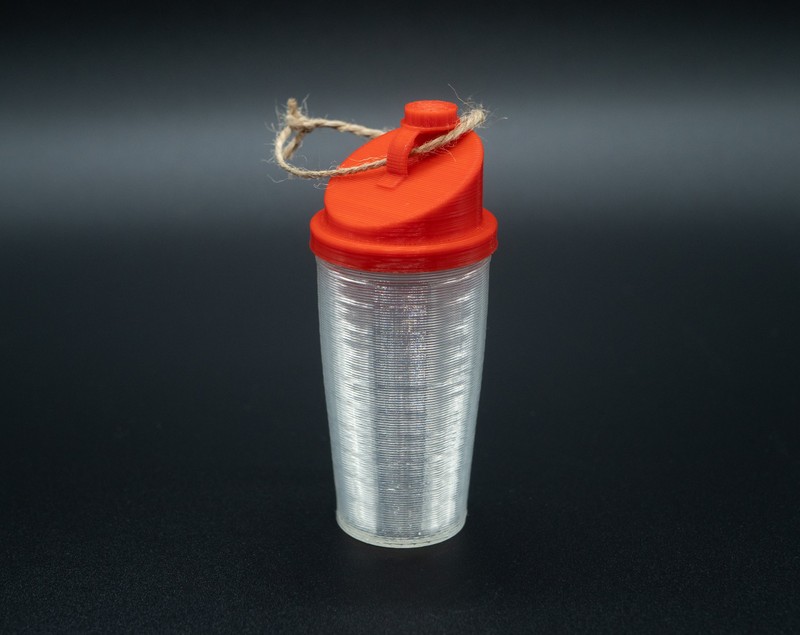PETG Filament Detailed Guide
PETG is a well known 3D printer filament type that has high strength and temperature resistance, while still being easier to print than other filaments with these qualities. It also withstands UV light and can be printed watertight, making it a great choice for outdoor use. On this page, we’ll cover the appearance and properties of PETG filament, our suggested settings for 3D printing it, and the PETG filament brands we recommend.
PETG Appearance
- Glossy finish
- Transluscent (except for black and white colors)

PETG has a glossy finish that is more shiny than most other filament types. It’s usually translucent, except for the black and white color options. These qualities give PETG a decidedly different appearance than other common filament types—the shiny translucent appearance can be appealing for decorative models, but layer lines and infill patterns may be more visibile than they would be on a more opaque material.
PETG Strengths
- Excellent layer adhesion
- Can flex without breaking
- High temperature resistance
PETG is one of the strongest 3D printing filament types available. It has excellent layer adhesion, making it more able to withstand tensile forces than most other filament types. This also makes PETG an excllent choice for printing parts with thin walls or parts that use vase mode, which uses only a single wall. It can flex slightly without breaking, making it a good choice for parts that need to snap together. Its impact resistance is on par with ABS filament.

PETG is also well-suited for use outdoors or in other demanding environments. It’s more resistant to UV light than other common filament types, and the high layer adhesion means that PETG parts can be printed watertight. Its temperature resistance of 180° F (82° C) puts it well ahead of PLA, although it’s not quite as resistant to high temperatures as ABS. Regardless, you can safely use a PETG part inside a hot car or outdoors in direct sunlight without risk of it deforming or warping.
PETG Weaknesses
- Difficult to 3D print
- Difficult to post-process
Compared to other filament types, PETG is a bit more challenging to 3D print cleanly. The melted filament has a tendency to stick to the nozzle, which can build up throughout the print and cause a printing defect or failure in some cases. And while it doesn’t warp the way ABS does, sharp corners can tend to peel up from the bed during the early layers of the print. PETG must be printed more slowly than PLA or ABS to avoid stringing and surface defects, and is more prone to these issues than other filament types.
PETG can be more difficult to post-process than other filament types. The translucent nature of most PETG filament makes many types of models look good, but it has the downside of accentuating layer lines and making the infill pattern more visible from the outside. Depending on the look you are going for, these may be downsides. It’s also harder to sand PETG than other filament types, which makes smoothing and painting prints more challenging than it would be with PLA or ABS.
How To 3D Print PETG
You will need to use a hotend temperature of 240-250° C to print PETG filament. This is right at the limit of PTFE-lined hotends, so while you can probably print PETG successfully with such a hotend, you may consider upgrading to an all-metal hotend (for example, a Micro Swiss hotend [Amazon link] if you plan to print with it frequently. We recommend a bed temperature of 80° C, which most printers should be able to hit (It may just take slightly longer than heating for PLA).

You need to print PETG more slowly than other filament types to reduce the possibility of stringing and surface defects. It’s hard to completely eliminate stringing in PETG prints, but we’ve found that printing slowly does reduce these defects enough to be worth the added time.
PETG doesn’t have any major bed adhesion issues, although you should watch for sharp corners on the printed model, as these can tend to curl up during the first few layers of a PETG print.
Our recommended slicer settings for printing PETG are:
- Hotend temperature: 245° C
- Bed temperature: 80° C
- Print speed: 25-35 mm/s
- Retraction amount: 0.8mm for direct-drive extruders, or 7.5mm for Bowden extruders
- Part cooling fan: 50%
Recommended PETG Filament Brands
PETG is a popular filament type and there are many manufacturers to choose from. We’ve tested several and have generally seen good results from each, without much deviance in performance or reliabiity.
These are a few of our preferred brands for PETG filament:
- Overture PETG [Amazon]: Overture is typically our go-to brand for PETG filament, with an affordable price and consistent quality.
- Hatchbox PETG [Amazon]: Hatchbox is a well-known and trustworthy brand for filament, and offers many color options for PETG. It’s a litle more expensive than other options, but tends to perform very well.
- NovaMaker PETG [Amazon]: One of the cheapest options for PETG. Available in fewer colors than the above options, and not quite as consistent, but still a good starting point for PETG.
- Polymaker PolyLite PETG [Amazon]: Another affordable PETG filament option that we’ve had success with. We tend to prefer Overture or Hatchbox over Polymaker, but it’s a good choice if you aren’t able to get the others in the color you want.